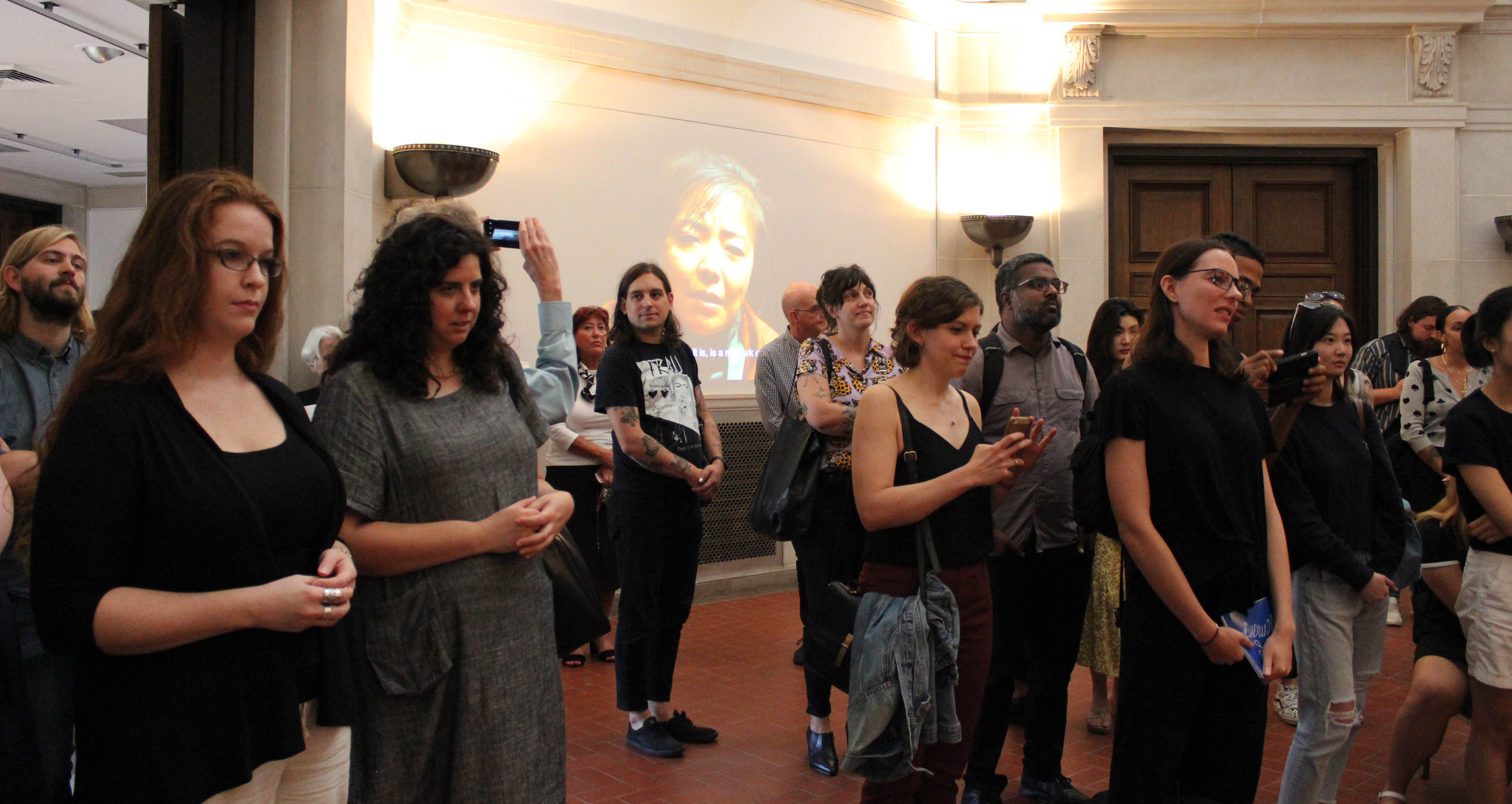
By DONOVAN HARRELL
The University Art Gallery’s “Materializing Memory” art exhibition features a series of firsts for the gallery.
This is the first show of the fall 2019 semester, the first all-video exhibition in the gallery and the first time that each of the five Chinese artists featured have had work shown in Pittsburgh, said Sylvia Rhor, director of the gallery.
“This is quite the accomplishment for the University Art Gallery,” Rhor said at the exhibition’s opening reception on Sept. 5. “We take this historic space, the resources we have and we're harnessing it in a whole new way for whole new audiences with a large, strong commitment to our students to our faculty.”
“Materializing Memory” features video art from five Chinese artists, each born after 1980. They are considered to be a part of China’s balinghou and jiulinghou (post 1980 and post-1990) generations, according Ellen Larson, curator for the exhibit and a doctoral student in History of Art and Architecture.
These artists grew up after China underwent a series of economic and cultural reforms in the late 1970s. Their work, informed by the Internet and international cultural exchange, shows different aspects of China’s post-socialist society, from intimate relationships to the environment.
The videos from Lin Ke, Chen Dandizi, Liu Yujia, Shen Xin and Sun Wenhao are shown through projectors or televisions spread throughout the gallery.

Larson described their work as “rooted in reality, but at the same time, they’re really transcending any kind of real specificity.” She added that these videos also explore themes of identity and belonging in a “fluid” way.
“And so collectively, the exhibition explores issues related to remembering and memory amidst social conditions and other changes that have otherwise fostered various forms of forgetting,” Larson said. “One of my goals for the exhibition is to think about how these artists are responding to social conditions that are happening within China today.”
Larson said this exhibition shows a different side of China, a more complex side that could subvert widespread ideas about the country.
“I think that the news within U.S. media, especially, it's incredibly biased,” Larson said. “I think that there are certain connotations that are associated with news stories coming out of China, that sort of coincide with assumptions that we might have about China already.”
Larson said she wants people leave the gallery with a newfound understanding of Chinese society.
“I hope that people can leave the exhibition with even just a little more of a nuanced understanding of contemporary experience in China, the complexities of contemporary China, and really just leave understanding that contemporary experience is not black and white.” Larson said. “There are so many shades of gray, that, I think it's really critical that we think about when we're confronted with a piece of news or information that’s related to China.”
The exhibition will be on display through Oct. 11. The University Art Gallery is open from 10 a.m. to 4 p.m. Mondays through Wednesdays and Fridays. The gallery's hours extend to 7 p.m. on Thursdays.
Donovan Harrell is a writer for the University Times. Reach him at dharrell@pitt.edu or 412-383-9905.
Have a story idea or news to share? Share it with the University Times.
